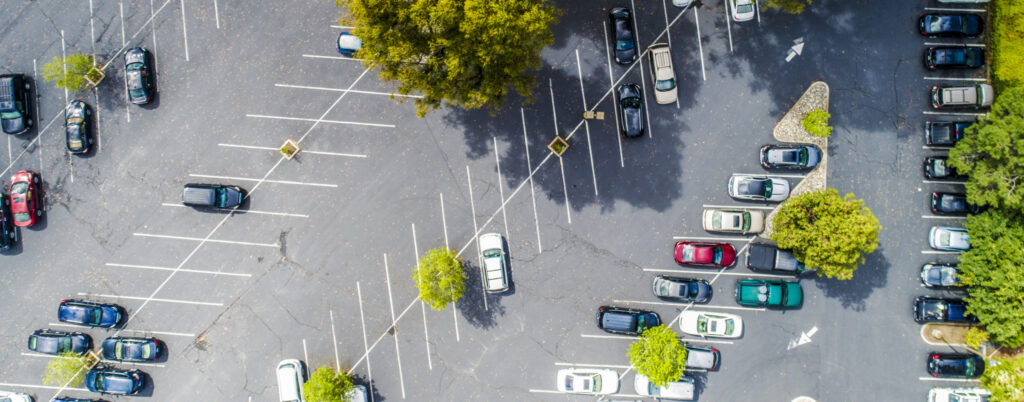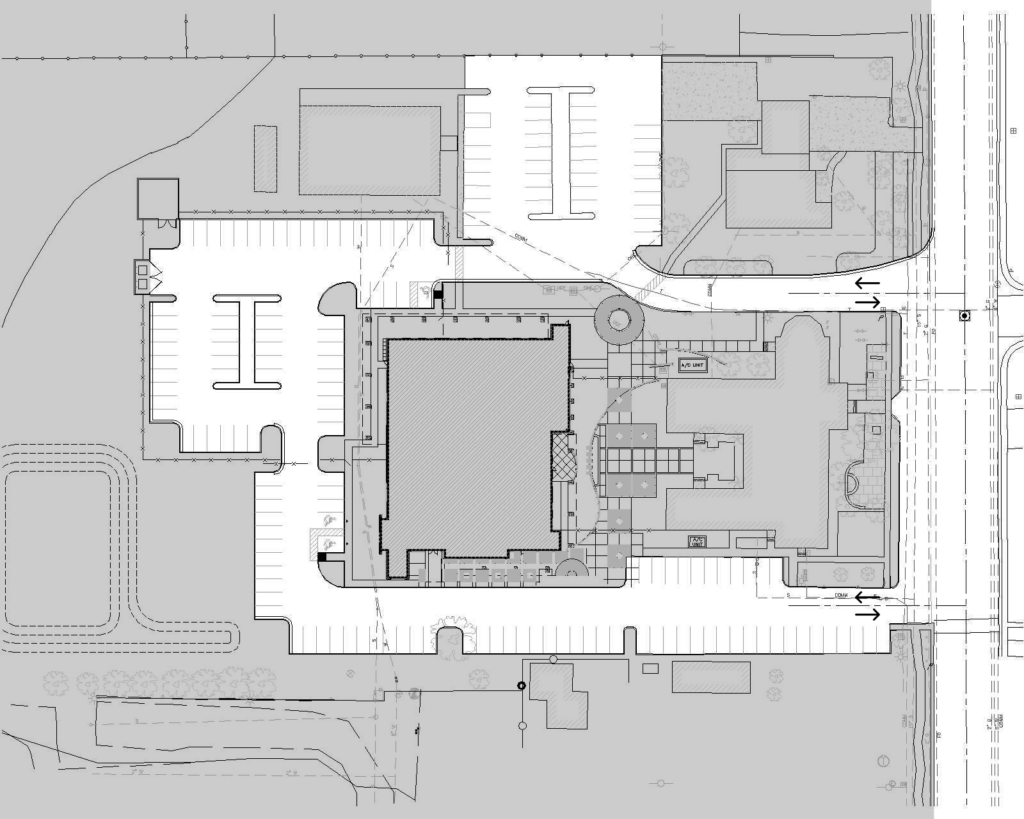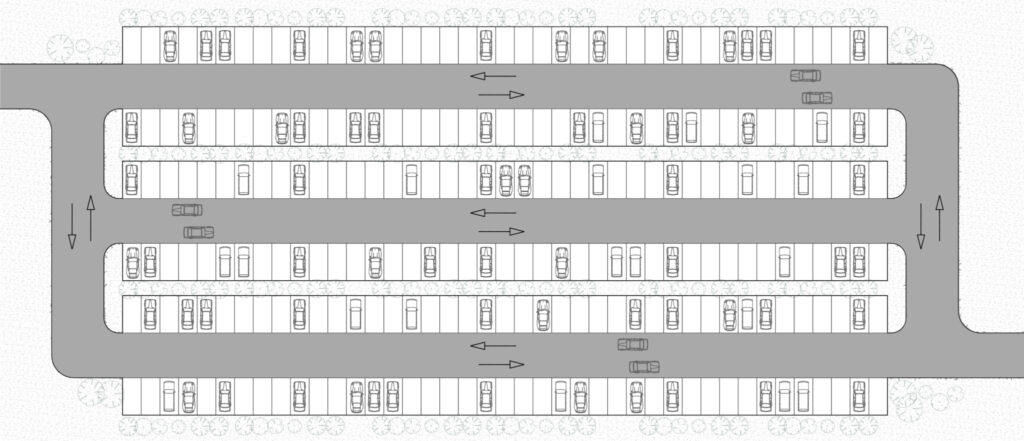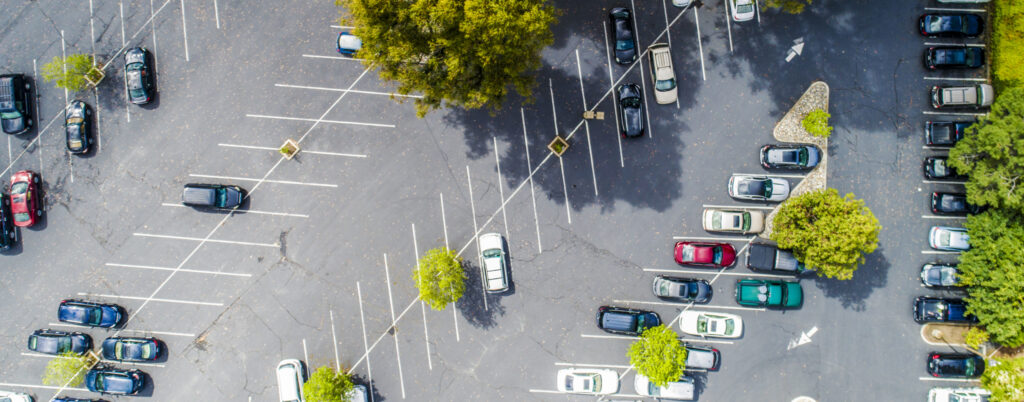
When designing a parking lot, essential factors to consider for effectiveness and efficiency include safety, convenience, cost, and design.
This checklist will outline the steps to design a parking lot to meet the needs of its owner and users. Whether you are a business owner, architect, engineer, urban planner, or contractor, it gives you an overview of requirements for creating a safe and efficient parking lot according to size, functional requirements, and regulations.
- Determine project goals and requirements
- Conduct a site analysis and survey
- Develop a preliminary design concept
- Create a detailed design
- Obtain necessary approvals and permits
- Other factors to consider

1. Determine project goals and requirements
Designing a parking lot requires careful planning and attention to detail. The first step is to determine the project goals and requirements. Consider the intended purpose of the parking lot, the number and type of vehicles that will use it, entry and exit points and how it is connected to the road network and any local zoning and building codes or regulations that must be followed.
Purpose of the Parking Lot
The purpose of the parking lot will influence the design decisions made throughout the process, particularly for the type of building it will accommodate. For example, a parking lot for a shopping center may require more spaces and easier access for pedestrians, while a parking lot for a manufacturing plant may require more space for large trucks and heavy equipment.
Number and Type of Vehicles
The number and type of vehicles that will use the parking lot will also impact the design decisions. Will the lot be used primarily by cars, or will there be a mix of personalized and commercial-type vehicles? Are there any special requirements for electric vehicle charging stations, handicap-accessible spaces or loading docks?
Entry and Exit Points
Understanding where the connection points should be located in relation to the road network is crucial to designing an efficient parking lot. Consider the number of entry and exit points, how the traffic will internally be distributed (one-way or two-way), and the location of any traffic control devices. You will also need to consider various circulation patterns and determine the best flow for vehicular and pedestrian traffic.
With a thoughtful assessment of the project objectives and specifications, designers should aim to develop a parking lot that caters to user requirements while optimizing space utilization and complying with relevant local regulations and guidelines.
2. Conduct a site analysis and survey
The next crucial step in this process is conducting a site analysis and survey to gather all necessary site data and evaluate the surrounding infrastructure. Preliminary research should be done to understand local zoning and building codes, investigate environmental regulations and requirements, and research available materials and technologies to build your parking lot.
Once this is done, the site analysis can begin by surveying the site and evaluating its size, shape, topography, utilities, accessibility, and visibility. It is also important to identify any potential environmental or geological constraints. Factors such as proximity to other facilities, zoning regulations, and transportation infrastructure should also be considered.
3. Develop a preliminary design concept
Once the space has been thoroughly researched, analyzed, and defined, you can create a preliminary site plan. This is where your technical expertise and creative problem-solving skills come into play as you balance both aspects.
It is crucial to consider all relevant factors and work closely with stakeholders to ensure the final product is functional and safe while meeting the needs of the community and the stakeholders. To determine the best stall angles and sizes for the project and site, you can test various options such as 45-degree, 60-degree, 75-degree, or 90-degree angle stalls. Additionally, you will need to decide whether to have one-way or two-way parking aisles. Drafting tools such as ParkCAD can make this task more straightforward. Alternatively, a web-based option such as AutoTURN Online Parking Design is also available.
4. Create a detailed design
Now that the preliminary design process is complete and approved by the stakeholders, the next item on the checklist is to create detailed drawings and specifications. This involves developing a site plan that includes the parking layout, circulation, and landscape design. The plan should also address accessibility, pedestrian safety, and proper placement of barriers, lighting, and signage.
In addition to the site plan, designers must prepare construction documents that detail grading, drainage, and utility plans. These documents should also specify the materials, finishes, and construction methods to be used in the construction of the parking lot.
It is important that the design and construction process complies with all local codes and regulations to ensure the parking lot is safe, secure, and environmentally responsible. By taking into account all of these factors and creating detailed plans and specifications, designers can create a parking lot that meets the needs of its users while maximizing space efficiency and complying with local codes.

5. Obtain necessary approvals and permits
After creating the detailed design and specifications for the parking lot, it is necessary to obtain the required permits and approvals before proceeding with construction. This involves submitting plans and documents to local authorities for review and addressing any concerns or required revisions. The local authorities will review the plans to ensure that they comply with local zoning codes, regulations, and other requirements. Once the plans have been approved, the designer can apply for approvals for construction to commence. Failure to obtain permits and approvals can lead to costly delays, fines, and even legal action. Therefore, it is essential to follow the procedure before beginning construction.
6. Other factors to consider
In addition to the aforementioned factors, designers must also evaluate the environmental impact of the parking lot design. The selection of materials and finishes must align with the project’s goals and budget. Developing a construction cost estimate and schedule will ensure the project is financially feasible and completed within the required timeframe.

In summary, designing a parking lot involves careful planning and attention to detail, from determining the project goals and requirements to obtaining necessary permits and approvals. Factors to consider include the purpose of the parking lot, the number and type of vehicles that will use the lot, and the expected traffic flow. In addition, it is important to conduct a site analysis and survey, develop a preliminary design concept, and create a detailed design that complies with local codes and regulations. By carefully considering all of these factors, designers can create a safe, functional, and environmentally-responsible parking lot that meets the needs of its users and the community. Do you need to design a preliminary parking lot quickly? Try out AutoTURN Online Parking Design